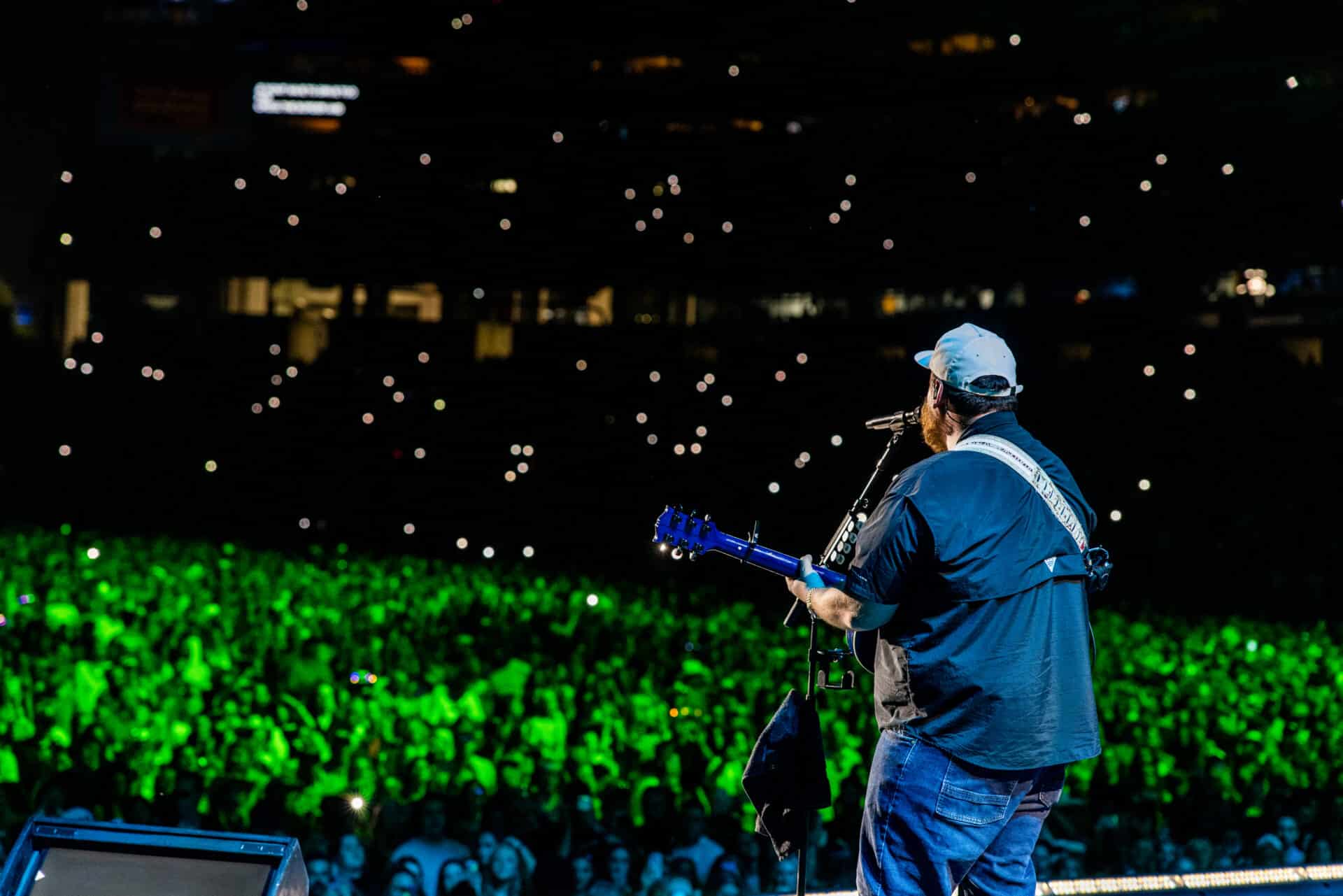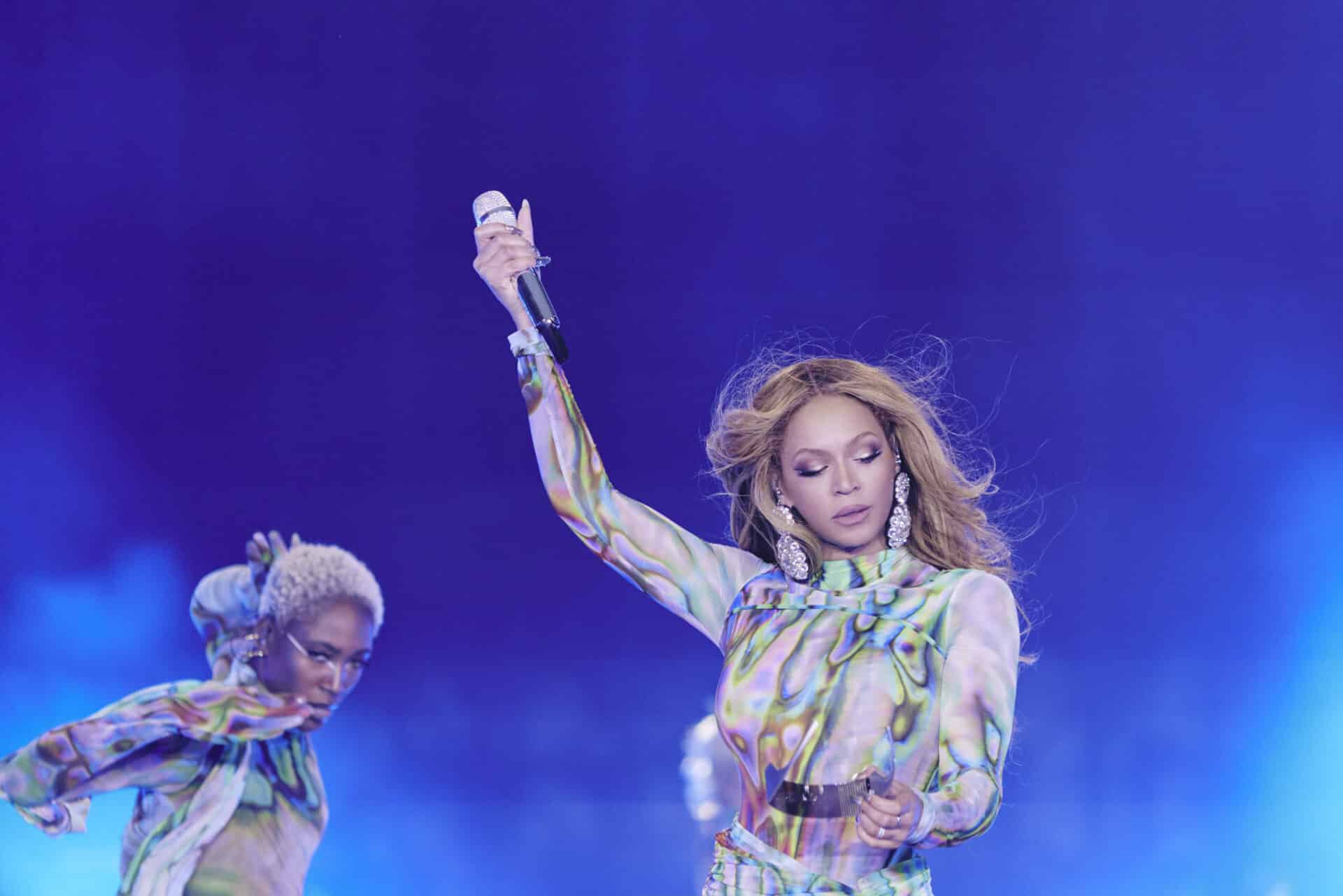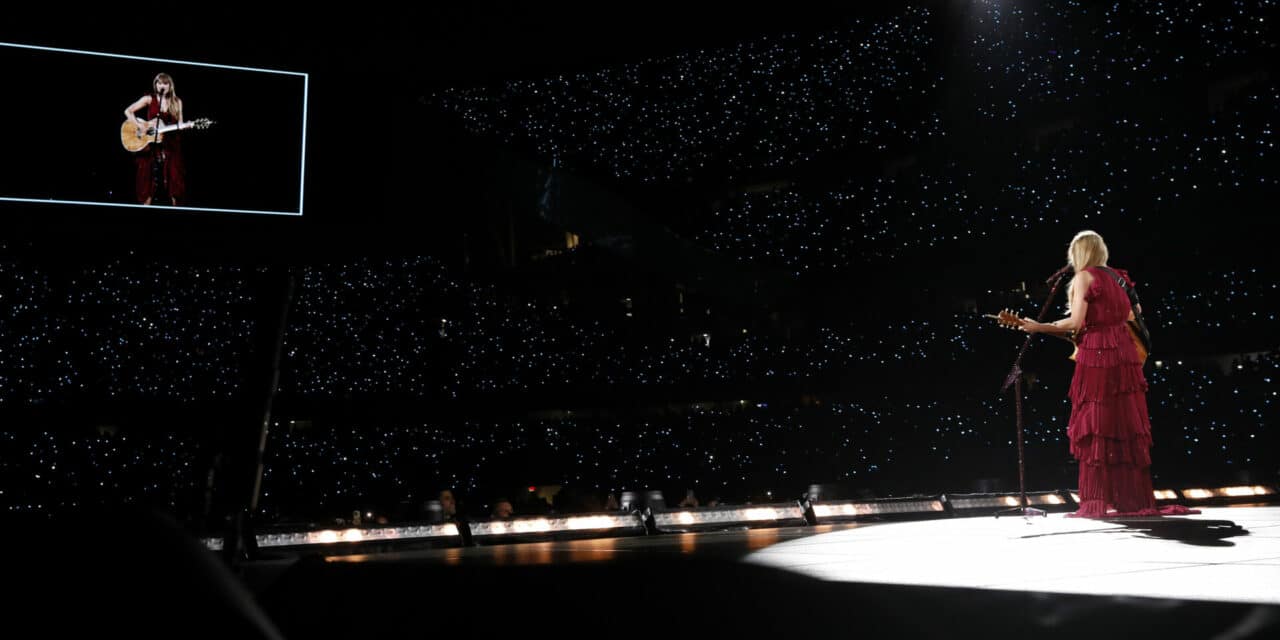ERAS: Taylor Swift’s “The Eras Tour” is taking over the biggest stadiums in the U.S. for multiple nights, and often a week if you count fan engagement leading up to events. (Photo by Natasha Moustache/TAS23/Getty Images for TAS Rights Management)
MID-YEAR WRAP-UP – THE STADIUM ERA
The strong start to another potential record-breaking summer concert season begs for a new tagline to replace The Year of the Stadium in 2022.
The midway point of the year has led VenuesNow and sister publication Pollstar to proclaim 2023 The Year of The Blockbuster, with mega-productions including Taylor Swift, Beyoncé, Ed Sheeran, Coldplay, Bruce Springsteen and Harry Styles criss-crossing the globe and putting up eye-popping grosses at major venues across the world. According to VenuesNow and Pollstar data, the Top 100 North American tours for 2023 are grossing an average of 22% more than 2022 and a whopping 51.7% over 2019. This comes with a ticket price increase of only 9.3% (over 2022) and 28.8% (2019). Five tours this year have already grossed more than $100 million, which hasn’t happened before.
The reason lies mostly in stadiums, with inflation bringing prices up significantly since COVID and the non-U.S. markets fully getting back to full capacity and providing an opportunity for early-year touring that wasn’t attractive in 2022 or feasible in 2021.
The first half of 2023 saw resumed activity in South America and Europe, with monster tours from Coldplay, Harry Styles while The Weeknd just kicked off his tour in early June. While this could be pointed to as another reason for continuing momentum despite economic tailwinds and fears of a recession — the other shoe still hasn’t dropped and shows no sign of doing so.
“There’s just an appetite for the fans to see these spectacles,” said Joe Litvag, executive director at Gridiron Stadium Network, which represents and consults on booking for 16 NFL stadiums. “As long as the artists keep delivering on their side, which they’re doing, then this is going to continue.” Litvag says that last year, 21 different stadiums held five or more concert productions. For 2023, the 16 Gridiron Stadium Network members are hosting a combined 82 concerts, with relative fresh blood such as Morgan Wallen, Luke Combs, Karol G joining the mix of pop stadium superstardom like Swift, Sheeran and Beyoncé.
The competitive spirit among the artist community helps drive the production value and number of shows to an extent, but, Litvag says, the stadium era boils down to supply and demand.

Tickets Going, Going, Gone: Luke Combs, shown here during CMA Fest at Nissan Stadium in Nashville June 8, is part of the new stadium headliner class. Earlier this year he set an attendance record at the stadium.. (Photo by John Shearer/Getty Images for CMA)
“If the fans aren’t buying these tickets, we’re all in trouble,” Litvag said. “But the fans keep buying. Therefore the artists are saying, well, let’s keep going.”
There was a clear jump in stadium activity in 2022 compared to 2019, with stadium shows making up 3.2% of all shows reported last year, compared with 1.8% of shows in 2019. In 2022 those stadium shows made up a whopping 27.8% of total grosses reported.
While it’s too early to say how 2023 will stack up in total grosses and tickets sold, the averages this year are striking. For 2023 the average stadium gross is $3.8 million, with 36,576 tickets sold per show. While more shows will likely bring down those averages, that still dwarfs 2022’s stadium totals —
$2 million grossed and 20,444 tickets sold on average per show.
A big reason for those numbers is the blockbuster venues they’re taking place in, mostly NFL stadiums. That means the largest stages, biggest production and, thanks to recent developments, modern facilities to pull them off.
“We’re off to a great start and we have a lot to look forward to the rest of the year,” said Ann Dunne, assistant general manager at US Bank Stadium in Minneapolis. After a busy 2022, the 66,200-capacity stadium this year hosted its first April show, which she called an early start to their concert season. That show featured the Red Hot Chili Peppers, themselves coming back for a second year of U.S. stadium touring. “Then we just had Luke Combs, which was our largest-attended end-stage concert that we’ve had in the building so far.” The Luke Combs show sold out its ticket allotment at 53,406, grossing $5.5 million.
Coming up at US Bank Stadium are two nights of Taylor Swift, two nights of Ed Sheeran and then a Friday night Billy Joel / Stevie Nicks co-bill followed immediately by a Vikings home game on Sunday. Dunne acknowledges the quick turnaround involved for that particular show, the quickest they’ve done so far between concert and football game.
“Yep. That’s going to be a new challenge for us at the building,” said Dunne, who is heavily involved in booking shows at the stadium, while reporting to general manager John Drum. “We’re excited to take that on.”
With stadium-sized concert productions requiring massive infrastructure and careful planning to not catastrophically impact the football playing field or otherwise negatively affect gameday operations, Dunne says US Bank Stadium is eager to host as many stadium concerts as possible.
“For us, it’s pretty cool to have the enclosed building because we don’t have a curfew or noise ordinance,” said Dunne of the building that opened in 2016. “We really can accommodate huge shows. We had Rammstein and they were blowing fire everywhere, although they did have to ask when they booked it if the fire would melt the roof. It is a state-of-the-art facility, so the tours love coming here because it’s like walking into a brand-new space and can do what they need to.”
The problem becomes making it all work on the calendar.

Queen Bey Looms: Beyoncé, who just wrapped a sold-out five-night run at Tottenham Hotspur Stadium in London on her “Renaissance” tour, hits North America in July. She’s one of multiple 2023 blockbuster tours that have yet to kick off. (Getty Images)
“We’re already looking at a busy year for next year,” she said. “We’re still seeing strong demand for the shows that we have this year. Next year is starting to shape up like this year in a similar fashion, but past next year, I can’t say.”
Other NFL stadiums are sharing similar stories. Doug Thornton, ASM Global executive vice president, noted that five of seven of the company’s NFL stadium management clients have concerts this year. Record show counts are coming for State Farm Stadium in Arizona, which hosted opening night of Swift’s tour. The venue has six shows booked for 2023. Other record show counts are in store for NRG Stadium in Houston and Soldier Field in Chicago — both hosting three nights of Swift.
Since the stadium concert trend started really picking up in 2018, notably with Swift and Ed Sheeran jaunts, industry experts have wondered when and if it would die down. Some have expressed concern over a lack of headliners to sustain the top level of the business as older artists slow down or ease into retirement. Last year’s Bad Bunny record-breaker of nearly $400 million grossed in one year may have put some of those fears to rest. New headliners have emerged in artists including Luke Combs and Morgan Wallen, while popular long-running bands like Green Day and Red Hot Chili Peppers put together strong packages and have shown they can fill the biggest venues in the country as well.
“The package is an important factor, similar to the festivals that I’ve been involved with,” adds Litvag, whose experience includes music festival production with AEG and Danny Wimmer Presents. “The Taylors and Beyoncés are in a different category altogether but, for the rest of the stadium-level business, having great support really is a key factor in being confident that they’re going to do the business and sell the tickets.”
With recession fears still looming, Litvag says venues and artist teams are “always operating with some level of fear,” but haven’t seen anything suggesting impending doom. He notes consumer demand in NFL stadiums in smaller markets like Baltimore, Cincinnati and Tampa, “and their business for stadium shows is just as strong as the big markets.” To maintain the momentum, venues can make themselves attractive to touring productions and remain proactive and aggressive to secure shows.
“In the past, you typically could say arenas were more concert friendly as opposed to stadiums – they were just hard, they would make it difficult. ‘We’re focused on football, you’re going to mess up our field,’” Litvag said. “That mindset has changed dramatically over the last 10 to 15 years. Stadiums do exactly what they need to do in most cases to welcome the artists, their entire camp. They roll out the red carpet and make them feel like they’re just as important as their football team or baseball team.”







